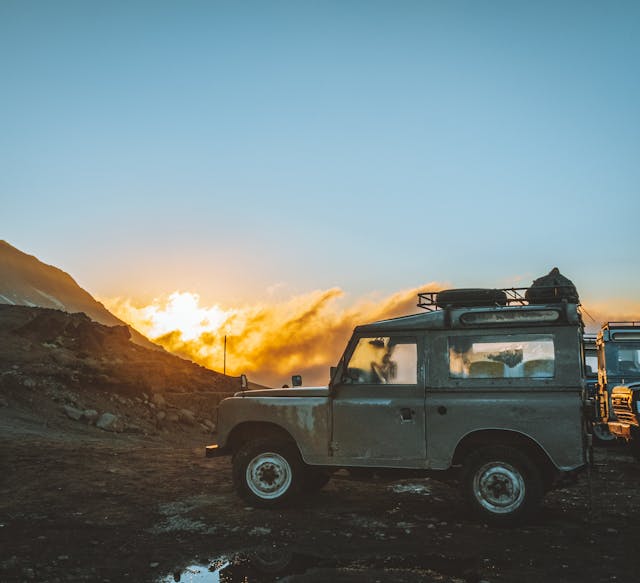Jeep Safari vs. Traditional Safari: Which Adventure Is Right for You?
- Pappu Singh
- October 17, 2024
- Taxi Service

Introduction
Safaris have long captivated travellers seeking adventure and a closer connection to wildlife. The thrill of encountering majestic animals in their natural habitats is a powerful draw. As safari experiences have evolved, two distinct options have emerged: Jeep safaris and traditional safaris. This article aims to guide you through these two types of adventures, helping you decide which is the best fit for your travel aspirations.
Understanding Safaris
Definition of Safari
A safari, originating from the Swahili word for “journey,” traditionally refers to an expedition to observe or hunt animals in their natural environment. Today, it has come to signify a broader range of experiences focused on wildlife viewing, conservation, and education.
Historical Background
The safari experience dates back to the late 19th century when wealthy individuals travelled to Africa for big-game hunting. Over time, this practice transformed into wildlife tourism, prioritising conservation and ethical animal interaction. Modern safaris now emphasise eco-tourism and sustainable practices.
Different Types of Safaris
Safaris can be categorised into various types, including:
- Walking Safaris: Guided tours on foot that offer a more immersive experience.
- Jeep Safaris: Vehicle-based adventures that allow for broader exploration.
- Balloon Safaris: Hot air balloon rides that provide aerial views of landscapes and wildlife.
Each type offers unique advantages and challenges, making it essential to choose the one that aligns with your interests and comfort level.
Jeep Safaris
What is a Jeep Safari?
A Jeep safari typically involves exploring wildlife areas in a four-wheel-drive vehicle, allowing travellers to cover vast terrains while maintaining comfort and safety. These safaris often take place in national parks and reserves, where skilled guides provide insights into the ecosystem and animal behaviour.
Advantages of Jeep Safaris
- Accessibility to Remote Areas
Jeep safaris allow you to reach off-the-beaten-path locations that are otherwise challenging to access. This opens up a world of unique wildlife experiences. - Comfort and Safety
Travelling in a vehicle offers a level of comfort and safety, especially in regions where wildlife might pose a threat. Passengers can enjoy the scenery without the physical demands of walking. - Group Tours or Private Experiences
Jeep safaris can accommodate different group sizes. Whether you’re travelling solo or with family, there are options for both group tours and private excursions.
Considerations
While Jeep safaris have many advantages, there are important considerations:
- Environmental Impact
Vehicle use can have a carbon footprint. Opt for operators committed to eco-friendly practices to minimise your impact. - Wildlife Interaction
Ethical considerations arise regarding wildlife interaction. Responsible operators prioritise the well-being of animals and adhere to best practices for viewing them in their natural habitat.
Traditional Safaris
What is a Traditional Safari?
Traditional safaris, often characterised by walking tours, emphasise a closer connection to nature. These safaris allow participants to explore wildlife areas on foot, offering a unique perspective on the environment.
Advantages of Traditional Safaris
- Closer Connection to Nature
Walking safaris provide an intimate experience, allowing you to engage with the environment and appreciate the smaller details often missed from a vehicle. - Unique Experiences
Tracking animals on foot can be exhilarating. Guides share their knowledge of animal behaviour and the ecosystem, enriching your understanding. - Immersive and Educational
These safaris often include opportunities to learn about local cultures and conservation efforts, making them not just a wildlife experience but also an educational journey.
Considerations
However, traditional safaris come with their own set of challenges:
- Physical Demands
Walking safaris require a certain level of fitness. Be prepared for extended periods of walking in varying terrain. - Safety Concerns
Being on foot in wildlife areas presents inherent risks. It’s crucial to go with experienced guides who prioritise safety.
Key Differences
Experience
Jeep Safaris offer a broader range of views, allowing you to cover more ground and see diverse wildlife. Traditional Safaris, on the other hand, provide a sensory-rich experience that engages you with the environment on a personal level.
Flexibility and Mobility
Jeep safaris can easily adjust routes based on wildlife sightings, while traditional safaris follow specific trails and paths. This flexibility can be a significant advantage for those eager to see elusive animals.
Cost Comparison
Pricing varies widely between the two options. Generally, Jeep safaris may be more affordable due to group rates and the ability to cover more ground in less time. However, traditional safaris can sometimes be more expensive due to the need for experienced guides and smaller group sizes.
Choosing the Right Safari for You
Consider Your Preferences
Reflect on what excites you most about a safari. Are you looking for adventure and the thrill of the chase, or do you want a deep, immersive connection with nature?
Group Dynamics
Consider the people you’re travelling with. Jeep safaris can be ideal for families or larger groups, while traditional safaris may suit smaller groups or solo travellers seeking solitude.
Physical Considerations
Assess your fitness level. If you’re comfortable walking long distances and navigating diverse terrains, a traditional safari might be perfect. If you prefer a more relaxed pace, a Jeep safari would be a better fit.
Popular Destinations for Each Type
Top Locations for Jeep Safaris
- Kruger National Park, South Africa
Renowned for its diverse wildlife, Kruger offers guided Jeep safaris that provide incredible opportunities for animal viewing. - Masai Mara, Kenya
Famous for the Great Migration, Jeep safaris in the Masai Mara allow travellers to witness spectacular wildlife action. - Chobe National Park, Botswana
Known for its elephant population, Chobe offers fantastic Jeep safari experiences along the riverfront.
Top Locations for Traditional Safaris
- Selous Game Reserve, Tanzania
This vast reserve offers walking safaris that allow you to track wildlife and learn about the ecosystem directly from guides. - Zambezi National Park, Zimbabwe
Known for its walking safaris, Zambezi offers intimate encounters with nature and stunning landscapes. - Linyanti Wildlife Reserve, Botswana
This exclusive reserve provides walking safaris that emphasise the rich biodiversity and unique landscapes of the region.
Conclusion
Choosing between a Jeep safari and a traditional safari ultimately depends on your personal preferences and travel style. Both offer unique experiences that highlight the beauty and diversity of wildlife. A Jeep safari is perfect for those seeking comfort and broad exploration, while a traditional safari provides a more immersive and intimate connection to nature.
Consider your interests, fitness level, and the type of adventure you desire. No matter which option you choose, a safari is sure to be a memorable experience filled with breathtaking sights and unforgettable moments.

Luxury on Wheels: Discover the Best Cab Service in Udaipur for Premium Experiences





